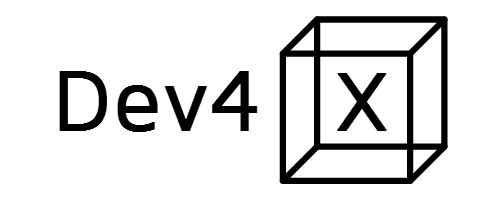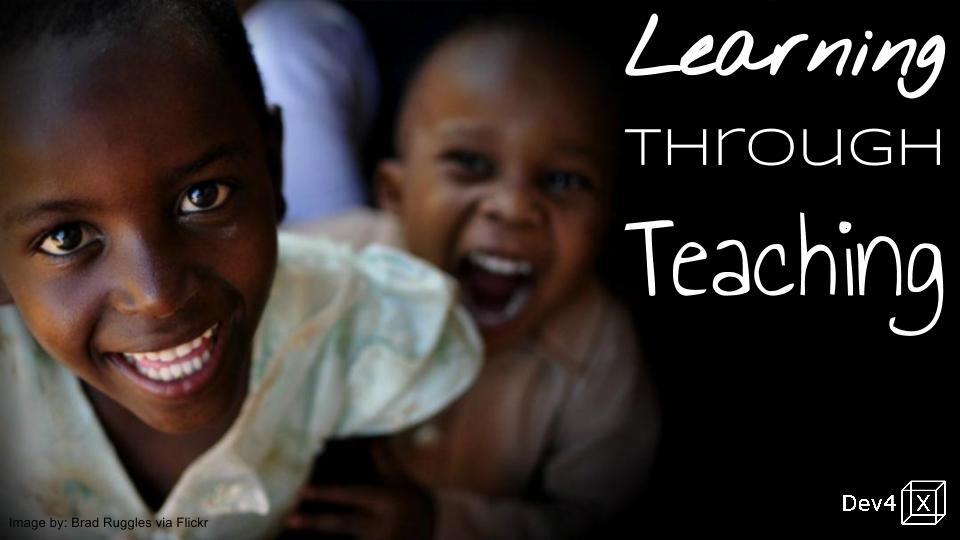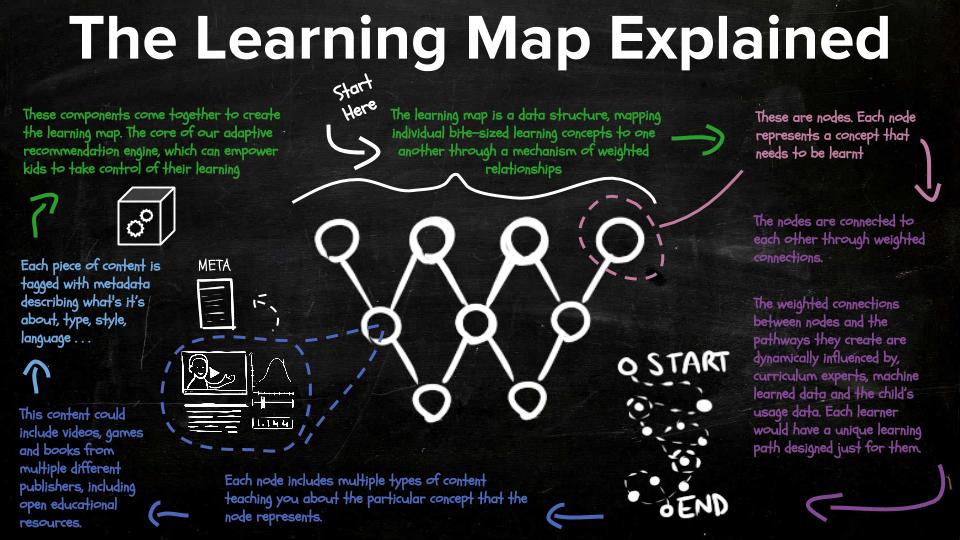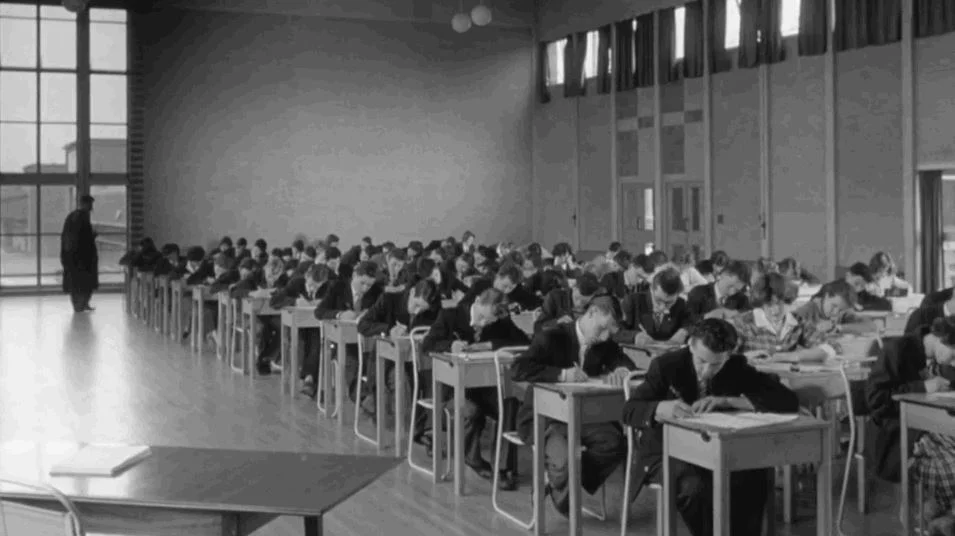The world as I see it — Part 2
A PERSONAL STORY BY BODO HOENEN, FOUNDER OF DEV4X
Our children are growing up into a world where they will need to be highly creative self-starters and entrepreneurial in-order to be successful. Instead our traditional systems are busy preparing them for a world where they are encouraged not to do much of their own thinking, where they are expected to follow what their employers instruct them to do, follow what's on the job description and make sure they hit their key performance indicators (KPIs). That world is dead, thankfully, but it’s still what our kids are being prepared for. This has to change!
It’s estimated that as much as 40% of today's S&P 500 companies will no longer exist in 10 years, We are already seeing an emergence of companies and start-ups who no longer view their employees as simple cogs that can be replaced but instead require them to be creative problem-solvers. Cog type jobs are being rapidly replaced by automation, algorithms and robots. As I wrote about in part one, 60% of today's jobs will not be needed in the near future and 65% of our kids who are currently in grade school will end up at jobs that haven’t been invented yet. These massive changes that are already taking place will only speed up in the years to come. Yet instead of being ahead of the curve, our educational systems are preparing our kids for a future stuck in the past.
We have been optimising our current educational systems for the past 100 years, and when all you do is optimise, you end up with a system that is bloated, bureaucratic, expensive and ultimately unfit for purpose. The argument I made in part one was that we can no longer afford to simply optimise our current systems, and the change we need is far more than reform —which usually compromises necessary change for short term gains. We need a complete overhaul, a completely new way of thinking about education, to implement a system that can instead be highly adaptable, nimble, scalable and responsive to changes as they happen. We know such systems are possible because we have two examples to look at: 1. The way children learn before they go to school, and 2. the way entrepreneurs keep updated after they leave school.
Example 1: Children learn by doing, by experimenting by playing by following their interests and passions. They don't learn to talk as a primary goal, they learn to talk so that they can better learn about the things they want to do and explore. It's unsurprising that my son's first words were: walk, outside, tablet, play, all the things he loves to do with me. Many on our team have done extensive research into child learning, which we are publishing here in a series of blog posts. Without going into detail, the key point I want to get across is that the pre-school learning approach that children take is highly effective, adaptive, scalable and quite similar to the approach we then revert back to when we leave school and enter back into the real world.
Example 2: Most entrepreneurs today cannot rely on a one-time education, most of what they learnt will have become outdated by the time they graduate. Instead their learning takes place in real time as they solve challenges. Bite-sized courses are taken all the time as needed, when a new challenge arises that requires a new skill. Experimentation takes place, their networks of contacts are tapped for expertise, knowledge is shared and increasingly the new skills that are learnt are then shared forward to others again. Hundreds of thousands of short courses and youtube videos are ready for you when needed. Experts are ready and available to be consulted at a moment's notice and often for nothing more than a beer, and learning is then documented in open wiki’s, MOOCS and other libraries ready for the next person to grab a hold of and build on. This approach to learning and sharing is again, just like pre-school learning, highly effective, adaptive, scalable and mostly, empowering. It fuels our innate curiosity, fosters our creativity and instills a deep love of learning.
It is ironic that ‘Education’ is stuck in the middle of these two examples!
This is why we are thinking radically different about education. Our approach is to provide children with a set of tools that will give them the opportunity to leapfrog our obsolete traditional education no matter what their circumstances. Beginning with the most under-served children that cannot go to school because of poverty, conflict or gender norms within their society.
A set of tools that can help these children can help all children!
Technology will be their tool, curiosity will fuel their learning
To do this we are providing these children four tool sets, via software installed on low-cost mobile devices that can operate stand-alone disconnected from the internet.
Self-directed Learning Toolset:
The first is a toolset designed to enhance their ability to take their learning into their own hands and self-learn. Kids are like sponges they soak up new learning every day, especially about things they are interested in and the tools we are developing enhance their ability and drive to do so. We have various mechanism we are testing and providing these children, the first is a tool that allows them to explore all there is to learn in their own way, in their own time and without training wheels. I spoke about this at a TEDx talk earlier this year using the example of my 5-year-old daughters’ interest in rockets, and using that opportunity to teach her rocket science. It would have been something totally out of her depth in any other context but because of her keen interest and curiosity, she started learning it and through that learnt many more basic lessons in literacy and math. Our explorative learning map allows children to explore all there is to learn and see how far off concepts in astrophysics —for example— are connected to the concepts they are learning today in math, science, biology, literacy...
Another tool we are testing is a quest-based learning mode, using game mechanics and social mechanics to encourage the learner through learning paths that we are crowdsourcing from experienced educators. Quests could be based on skills they may want to learn, outcomes that are important to further their learning or topics that peak their curiosity.
Peer-to-peer Learning Toolset:
The second set of tools are designed to enhance these children’s ability to teach others and learn from their friends. We know that one of the best ways of learning is to teach and therefore this is a key toolset that not only increases their ability to learn but multiplies that by also empowering them to teach their friends and their community around them. By facilitating the matching of learners in pairs and groups, and seek out expertise in their friends as they would in the real world, we are fostering this collaborative learning approach. At any stage each learner is also a teacher.
Project Based Learning Toolset:
Fata, learning how to take care of children affected by ebola from local doctors in Liberia. Image from More Than Me
The third is providing these children purpose and value by empowering them even from a very young age to take an active role in furthering their communities health and well-being. Project-based learning is how most learning takes place in our workplaces and in the real world. It’s here that we are challenged with real-world problems that require creativity, problem solving, collaboration and teamwork. These are the key skills that are needed to be successful today, which is why from the beginning these are inbuilt into our approach. By providing children real world projects, like helping to reduce the spread of malaria in their village, we are not only teaching practical skills but also clearly showing our children that they are valuable, important and don't need to wait until they are out of school before they can make an impact in the world.
Quality learning and learning map toolset:
Read more here
The fourth toolset is quality educational content pulled from appropriate resources, tagged and made available to the children through a personalized learning map. Our platform is being built from the ground up to be content agnostic, able to utilize open educational resources available, crowdsourced content created through our community and also third party content from publishers, game developers and educators.
Overcoming inertia
Most Likely To Succeed trailer: http://mltsfilm.org
Trying to make this change within the huge bureaucratic educational mass market would bring you head on into the immense inertia within that system. Especially when it comes to qualifications, employment and the assumptions parents make about the value of traditional accreditations. A hugely important documentary was produced on this topic ‘Most Likely To Succeed’ —See trailer. There are many gatekeepers who because of fear of change, protectionism or short-sightedness would stop any such attempt at radical change like we are pushing for, and yet we will need to overcome this. One of the gatekeepers that even the most underserved children have are parents and community members, who out of fear would rather have their children get an obsolete education than risk something new. So how do we overcome this?
Recruitment processes have already commenced making this change. Ernst and Young in the UK have removed academic qualifications from their criteria. Google, rated the best place to work, no longer cares much about where you went to school or what your qualifications say. The traditional markers of where a person went to school and what their grades were, would usually determine if a candidate were a good potential hire, however this turned out to be the “wrong” hiring strategy said Laszlo Bock, Google's Head of People Operations. Many companies are starting to realise that the people they now need to work for them are not the bright academics at the top of their class, but rather the creatives, the problem solvers the ones willing to explore the boundaries of knowledge and jump, knowing they may ‘fail’. However the huge inertia in the traditional educational machine makes it slow for news like this to propagate and sink in. It's stuck in a cycle: Traditional education provides traditional qualifications which traditional employers then look out for, which further bolsters the need for traditional education. However as described above this cycle is now rapidly changing, traditional employers especially those that cannot adapt quickly enough are dying out really quickly.
This is why our strategy of focusing on those children, who have little to no access to formal education, makes for a great approach as there are less incumbent systems that need to embrace change. There are more than 100 million children who do not have access to education and given the current progress UNESCO estimates that it will take current efforts until 2086 to reach these children, and so there is a huge gap to be filled in the meantime. It is within this gap that we can radically reinvent education and provide these children learning that will leapfrog anything they could currently get, all without the pushback you would usually get from the status quo. This is part of the well-known innovator's dilemma: When confronting the challenge of implementing innovation with the potential to be quite disruptive to the incumbent, the disruptive innovation is best implemented in a vacuum first, in a marginal group untouched by the status quo. There the innovation can mature and be validated, and then when a critical mass of usage and maturity is reached the larger implementation can occur… Think of AirBnB and Uber, had they come out directly to take on the world giants of their industry, things would not have turned out the same, instead they approached the geeks and travellers on the margins first, the early adopters and those that did not fear change, and now with a mature solid offering, they are disrupting the traditional industries to their core and it’s likely the old behemoths will not be around in current form for much longer.
Radically Open
An audacious project on this scale would be a huge undertaking for any one organization, in addition it would traditionally rely on strategic secrecy, massive amounts of resources and ultimately create a solution that would be a walled garden that again would only really benefit those that can afford to pay back the initial investors that fronted the cost. This is not what the world needs! It is time the best quality education is available to all, no matter what culture, gender, religion or your bank account has within it.
This is why we are radically open. By adopting an open philosophy and freeing up our ideas so that they can be shared, improved, and used by anyone, ignites innovation. It will ultimately allow us to solve this challenge quicker, and produce a more inclusive solution far more valuable than any one organization could produce. Come join us!
To read part one of this series click here








